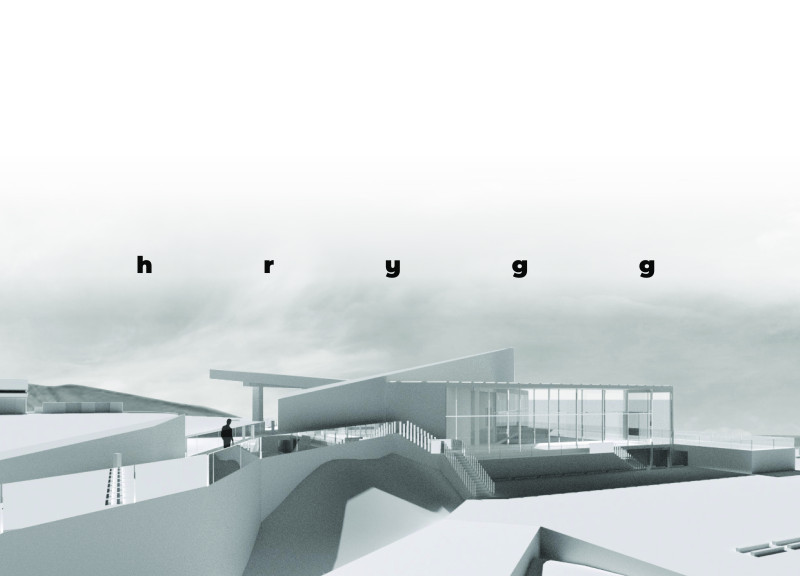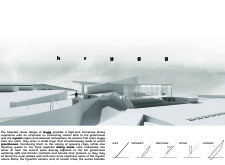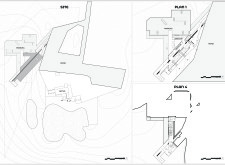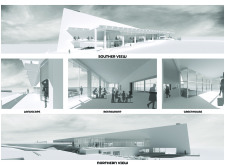5 key facts about this project
The design features a bisected linear form that enhances sightlines and spatial organization. The facility includes distinct zones: a greenhouse, dining areas, and kitchens, all oriented to optimize views and natural light. This arrangement strengthens the connection between the interior spaces and the landscape while facilitating a clear flow of movement for visitors.
Unique Aspects of Design
Hrýgg distinguishes itself through its integration of agriculture and dining. The greenhouse serves as a defining element, inviting guests to observe the cultivation processes, which fosters an appreciation for local produce. Unlike typical dining establishments, Hrýgg’s design encourages interaction between diners and the agricultural context, promoting an educational aspect to the culinary experience. The architectural design prioritizes transparency and accessibility, allowing kitchen staff and diners to engage visually and functionally.
Materials and Construction Techniques
The project emphasizes a careful selection of materials conducive to both structural integrity and aesthetic appeal. Predominantly, glass is utilized to create expansive views, enhancing the relationship between interior and exterior environments. Concrete is selected for its durability and functionality, forming the core structural components of the project. Steel elements contribute to a modern aesthetic while allowing for efficient spans and open spaces. The careful consideration of these materials reflects a commitment to sustainability and energy efficiency, aligning with contemporary architectural practices.
Visitors are invited to explore the architectural plans, sections, and designs to gain a comprehensive understanding of Hrýgg's innovative approach to integrating nature with gastronomy. The project showcases how thoughtful architectural concepts can redefine dining experiences while promoting environmental awareness. For a deeper insight into its architectural details and functional layout, interested readers should review the project presentation, engaging with the carefully curated architectural ideas that define Hrýgg.


























